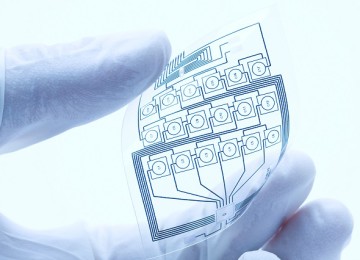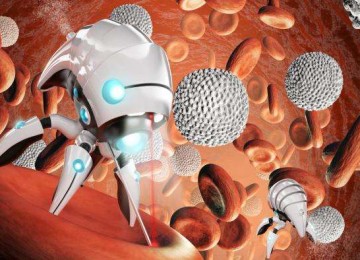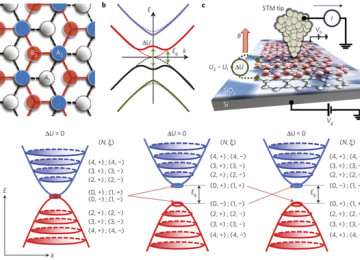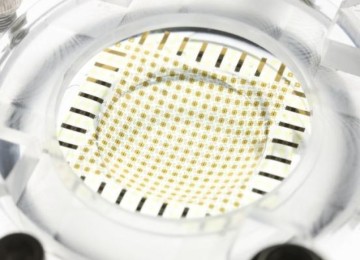Graphene LEDs emit single photons for quantum electronics
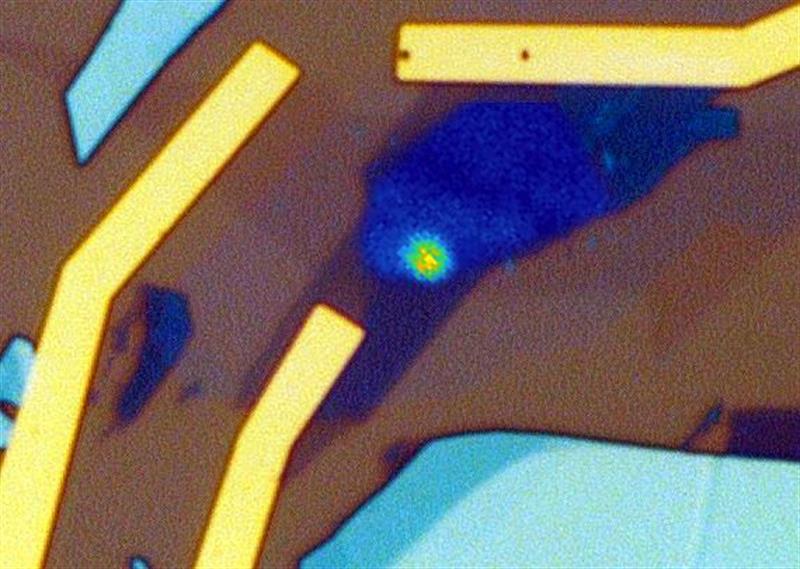
Graphene LEDs emit single photons for quantum electronics
The optical computer structure, the optical or photonic computing technology depend on uses photons produced by lasers or diodes for computation rather than electric pulses in computer data and processing , Researchers from the Graphene Flagship have used layered materials including graphene, boron nitride and a transition metal dichalcogenide (TMD) to create all electrical quantum LEDs which can emit single photons. The devices are said to have the potential to act as on-chip photon sources in quantum information applications For decades, photons have promised to allow a higher bandwidth than the electrons used in conventional computers and make super speed in data processing .
The LEDs are made of thin layers of different materials, stacked to form a heterostructure. Electrical current is injected into the device, tunnelling from single layer graphene, through a tunnel barrier of a few layers of boron nitride and into a mono- or bilayer of a transition metal dichalcogenide (TMD), such as tungsten diselenide (WSe2). In this layer, electrons recombine with holes to emit single photons.Previously, single photon generation was said to rely on optical excitation, large scale optical setups with lasers and precise alignment of optical components.
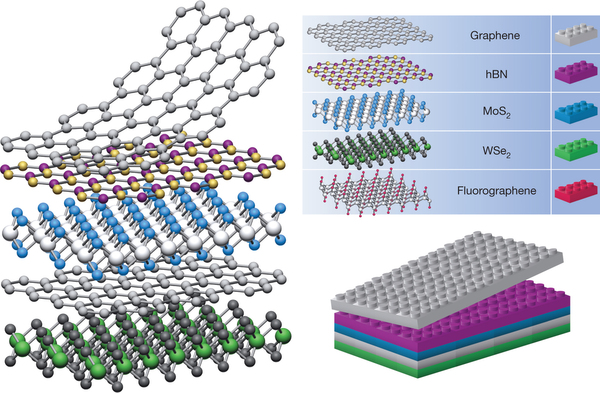
LED Heterostructure from constructed of thin layers of different materials.
Heterostructure mean:
The combination of multiple heterojunctions together in a device is called an heterostructure although the two terms are commonly used interchangeably.
A heterojunction is the interface that occurs between two layers or regions of dissimilar crystalline semiconductors. These semiconducting materials have unequal band gaps as opposed to a homojunction. It is often advantageous to engineer the electronic energy bands in many solid state device applications including semiconductor lasers, solar cells and transistors (“heterotransistors”) to name a few.
Previously, single photon generation was said to rely on optical excitation, large scale optical set ups with lasers and precise alignment of optical components.
Professor Mete Atatüre, from the Cavendish Laboratory at the University of Cambridge, said: “In a scalable circuit, we need fully integrated devices that we can control by electrical impulses, instead of a laser that focuses on different segments of an integrated circuit. For quantum communication with single photons, and quantum networks between different nodes – for example, to couple qubits – we want to be able to just drive current and get light out. There are many emitters that are optically excitable, but only a handful are driven electrically.”
The team added that, in its devices, a current of less than 1µA ensured that single photon behaviour dominated the emission characteristics.
Prof Andrea Ferrari, chair of the Graphene Flagship Management Panel and its science and technology officer, added: “We are just scratching the surface of the many possible applications of devices prepared by combining graphene with other insulating, semiconducting, superconducting or metallic layered materials. In this case, not only have we demonstrated controllable photon sources, but we have also shown that the field of quantum technologies can greatly benefit from layered materials.
“We hope this will bring synergies between the Graphene Flagship and its researchers, and the recently announced Quantum Technologies Flagship, due to start in the next few years. Many more exciting results and applications will surely follow.”
The LEDs are constructed of thin layers of different materials, stacked to form a heterostructure. Electrical current is injected into the device, tunnelling from single layer graphene, through a tunnel barrier of a few layers of boron nitride and into a mono- or bilayer of a transition metal dichalcogenide (TMD), such as tungsten diselenide (WSe2). In this layer, electrons recombine with holes to emit single photons.
Previously, single photon generation was said to rely on optical excitation, large scale optical set ups with lasers and precise alignment of optical components.
Professor Mete Atatüre, from the Cavendish Laboratory at the University of Cambridge, said: “In a scalable circuit, we need fully integrated devices that we can control by electrical impulses, instead of a laser that focuses on different segments of an integrated circuit. For quantum communication with single photons, and quantum networks between different nodes – for example, to couple qubits – we want to be able to just drive current and get light out. There are many emitters that are optically excitable, but only a handful are driven electrically.”
The team added that, in its devices, a current of less than 1µA ensured that single photon behaviour dominated the emission characteristics.
Prof Andrea Ferrari, chair of the Graphene Flagship Management Panel and its science and technology officer, added: “We are just scratching the surface of the many possible applications of devices prepared by combining graphene with other insulating, semiconducting, superconducting or metallic layered materials. In this case, not only have we demonstrated controllable photon sources, but we have also shown that the field of quantum technologies can greatly benefit from layered materials.
“We hope this will bring synergies between the Graphene Flagship and its researchers, and the recently announced Quantum Technologies Flagship, due to start in the next few years. Many more exciting results and applications will surely follow.”











